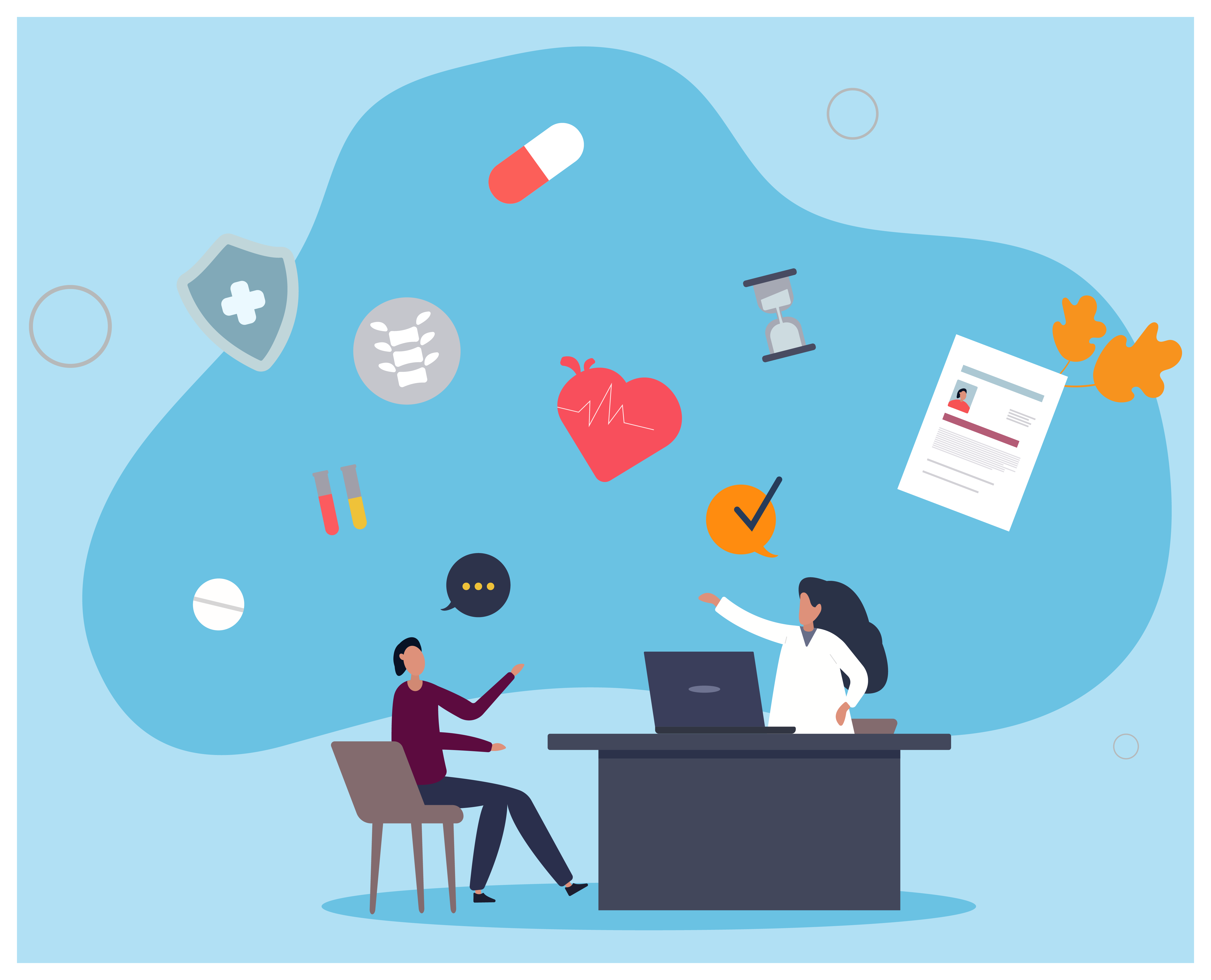
By: Youngjin Cho, Ph.D. (1), Jess Cunnick, Ph.D. (1), Brian Wilcox, MD, Ph.D. (2), John Szarek, Ph.D. (1)
- (1) Geisinger School of Medicine, Scranton, PA
- (2) NEPA Community Health Care, Greenfield Township, PA
At Geisinger Commonwealth Medical School, our new Total Health curriculum is designed to facilitate the integration of basic science, clinical sciences, and various themes. In the Phase 1 curriculum lasting 18 months for pre-clerkship students, Case-Based Learning (CBL), a component in the Integrated Science Courses (ISCs), provides learners the opportunity to delve deeper into a patient case integrating basic and clinical science and thematic topics in a small group setting with a faculty facilitator. To ensure appropriate integration of basic and clinical science, we use Integrated Illness Scripts (IIS) as a framework to develop cases and associated facilitator guides. Integrated Illness Scripts are useful because they link basic science knowledge to the understanding and decision-making of conditions that the patient presents with, promoting integration. Furthermore, using a case template based on IIS allows a consistent approach to the structure of the cases and embedded questions, which minimizes the learner and facilitator’s cognitive load.
The approach: How we use them
Integrative science courses and case-based learning
We use the Clinical Presentation Model as a framework for the ISCs. Each Clinical Presentation describes how a patient presents to the physician’s office, for example, Chest Discomfort. The Clinical Presentations are then grouped based on organ system blocks. Students learn the normal structure and function of the human body as well as the pathophysiology of several etiologies that are associated with each Clinical Presentation. Continuing with the Clinical Presentation, Chest Discomfort, as an example, in the Cardiopulmonary Block, students learn normal thoracic anatomy and the physiology of cardiac blood flow and regulation, followed by the pathophysiology of various conditions that can produce chest discomfort. We utilize the “flipped classroom” as the instructional approach where the students complete pre-work independently and come to the workshop where they apply their knowledge in solving a series of comprehensive questions facilitated by the faculty. (To learn more about the flipped classroom approach, you can find more in our previous blog posts on Using Aquifer in Flipped Classrooms and 7 Tools for Flipping Your Classroom with Aquifer).
Case-based learning occurs as a part of the weekly activities after the workshops to allow students to further integrate and solidify what they have learned. In CBL, the students review an undifferentiated case that starts with a short vignette of a patient presenting with a common concern germane to the specific Clinical Presentation that the students are learning. Using IIS as the template for developing cases assures that students working through the cases in CBL will align the pathophysiology, diagnosis, and management with the causal mechanisms associated with the patient case.
Integrated Illness Scripts are designed specifically to promote cognitive integration and provide a framework for learners to link basic science and clinical knowledge. Building on the traditional illness script format, Integrated Illness Scripts embed basic science core concepts and causal mechanisms within each clinical feature and display the connections visually through Mechanism of Disease Maps.
Each script begins with the overview of the disease and then continues with the epidemiology. For the given diagnosis, the Integrated Illness Script includes six prototypical clinical features seen commonly in patients with this condition. Within each clinical feature, the Integrated Illness Script describes the underlying basic science causal mechanisms that explain why a patient with that diagnosis displays that clinical finding.
In the Implications for Management and Further Work Up sections, students are provided an opportunity to reflect and take notes on how this knowledge will influence their clinical practice in diagnosing and treating a patient with this condition. Finally, the Mechanism of Disease Map traces the steps of pathophysiologic mechanisms from the underlying causes of disease to the observable and measurable clinical signs and symptoms. Providing a visual representation of the relationship between the “original insult”, key findings, clinical features, and the basic science mechanisms, MOD Maps enable students to see and integrate a more holistic view of the basic science knowledge relevant to the given condition.
Case templates based on IIS
We developed a case template based on the integrated illness framework. The case vignette and questions in each case encourage the learners to differentiate between related conditions based on key features and causal mechanisms. The case template is used to develop every case and includes the features outlined below:
- Patient History and Physical are presented first.
- Students are asked to present a problem list and a summary statement. (Similar to the problem presentation, but a separate sentence is used to define the physical exam).
- Students are then asked to create a differential diagnosis and rank the conditions. We typically attempt to limit these to three. The students are also asked to describe the pathophysiological cause of each condition and to justify each condition based on the demographics of the patient, the identified clinical features present, and the risk factors present (i.e., the problem list). The students are also asked to describe the pathophysiology of each clinical condition (an underlying pathological insult in the IIS) and define the causal mechanisms for each feature they identify. This is done to combine basic science knowledge of both the condition and prototypical clinical features with clinical problem-solving.
- If a defined differential is not available, the students are asked to commit to the definitive condition. The students are then asked to present the pathophysiological cause of the condition and the basic science causal mechanisms of the prototypical clinical features as to why a patient with the particular condition would present with that particular sign/symptom/key exam findings. This question is repeated for each feature. In the facilitator’s guide, basic science discipline faculty provide the answer to the causal mechanism and support the answer using the instructional material that the students have received. This is to ensure that facilitators can listen to the students’ discussion and encourage students to think deeply and to integrate materials.
- Following the identification of the differential diagnosis, students are asked to determine other diagnostic tests which could limit their differential diagnosis. They are also asked why they need these tests based on their basic science understanding of the conditions and clinical features present.
- The students are then presented with a number of diagnostic tests (e.g., x-rays, blood work, urine analysis, histology, etc.) and are asked to explain the results based on their basic science understanding and the conditions under consideration.
- Finally, we ask how the patient should be managed pharmacologically and to provide the mechanism of action of the drugs they select. Again, we ask them to describe how the basic science of the condition and the features support the selection of the drugs they use.
Outcome: How did it go?
In the student course evaluation, learners were asked to rate the question “CBL sessions facilitated my ability to integrate basic science with clinical science” based on a five-point Likert scale, where 1 is “strongly disagree”, 2 is “disagree”, 3 is “neutral”, 4 is “agree,” and 5 is “strongly agree”. Depending on the organ block, between 71 to 86% of the students agree/strongly agree that the CBL sessions helped with the integration, with a mean of 3.9 out of 5 on the scale. Very few students disagreed with this statement. Considering that CBL is student-driven, and integration is not explicitly stated in the cases, the learner’s perception of its utility in integration between basic science and clinical science affirmed the effectiveness of the instructional approaches. In comparison, the ISC workshops include the clinician-led discussion explicitly emphasizing how to support clinical approaches using pathophysiology diseases. The students rated the workshop as being useful in facilitating integration with a mean of 4.2 on the Likert scale.
Students included the following positive comments regarding integration with their evaluation:
- “I enjoy CBL because we get to integrate what we learn with clinical situations and scenarios.”
- “The workshops, instructional methods, and CBL were all great for helping me to practice applying concepts. I especially appreciated the CBLs as I felt they were a way to dive even deeper into the clinical aspects of the information we learned in lectures. Overall, instructional methods were very well done.”
- ”CBL provides a direct clinical link from the basic sciences to an actual case, which helps me understand why something actually happens the way that it does in real humans.”
- “I enjoyed the CBL sessions because they could help reinforce the concepts that we covered in class and the application allowed me to retain the material and start to build basic illness scripts.”
“I enjoyed the Case-based learning sessions because they could help reinforce the concepts that we covered in class and the application allowed me to retain the material and start to build basic illness scripts.” — Medical Student
Tips for adapting IIS to case development
Aquifer also has created a number of tools to help schools use IIS and reduce faculty time involved in framing cases or activities. Aquifer’s IIS webpage is a resource that can be used to onboard clinicians, and there are numerous additional educator stories available in their resource directory. Aquifer also has also ready-made integrated learning session plans and facilitator guides. When we do not have an in-house case, we often adapt Aquifer cases focusing on the initial patient presentation and lab values.
When we build our own cases, we utilize UpToDate® and VisualDx™ to come up with key features, but clinicians need to be on board to construct a prototypical and authentic case and select conditions in a differential diagnosis and key clinical features. Basic science faculty can discuss IIS and the associated literature related to cognitive integration, in contrast to traditional illness scripts, in engaging them to participate in case development.
Soliciting participation of basic science faculty members in case development and review can be equally challenging as it requires rethinking basic science concepts with their clinical utility and carefully linking core concepts. It is best to start small with champions of the curriculum model and use of the IIS. Faculty development is critical to the onboarding of all faculty in ensuring the development of cases that are consistent and of high quality.
It is hard to come up with causal mechanisms that align with the curriculum and the developmental stage of learners. Especially at the beginning, learners have not learned the basic science core concepts yet and have difficulty in basic science understanding of the features and how they relate to the pathophysiological cause of the condition. We give a couple of examples of basic science causal explanations to a select few features to set the expectation at the beginning of the 18-month phase 1 curriculum. More often, we prompt students to use self-directed learning as defined by the LCME to provide causal mechanisms.
In our curriculum, most cases have been revised using the template described above. However, this is an ongoing process that requires iterative revision by all faculty involved in the courses. It is helpful to have a long-term plan and stay motivated with small, reinforcing outcomes, such as positive feedback from students and facilitators on well-organized cases.




